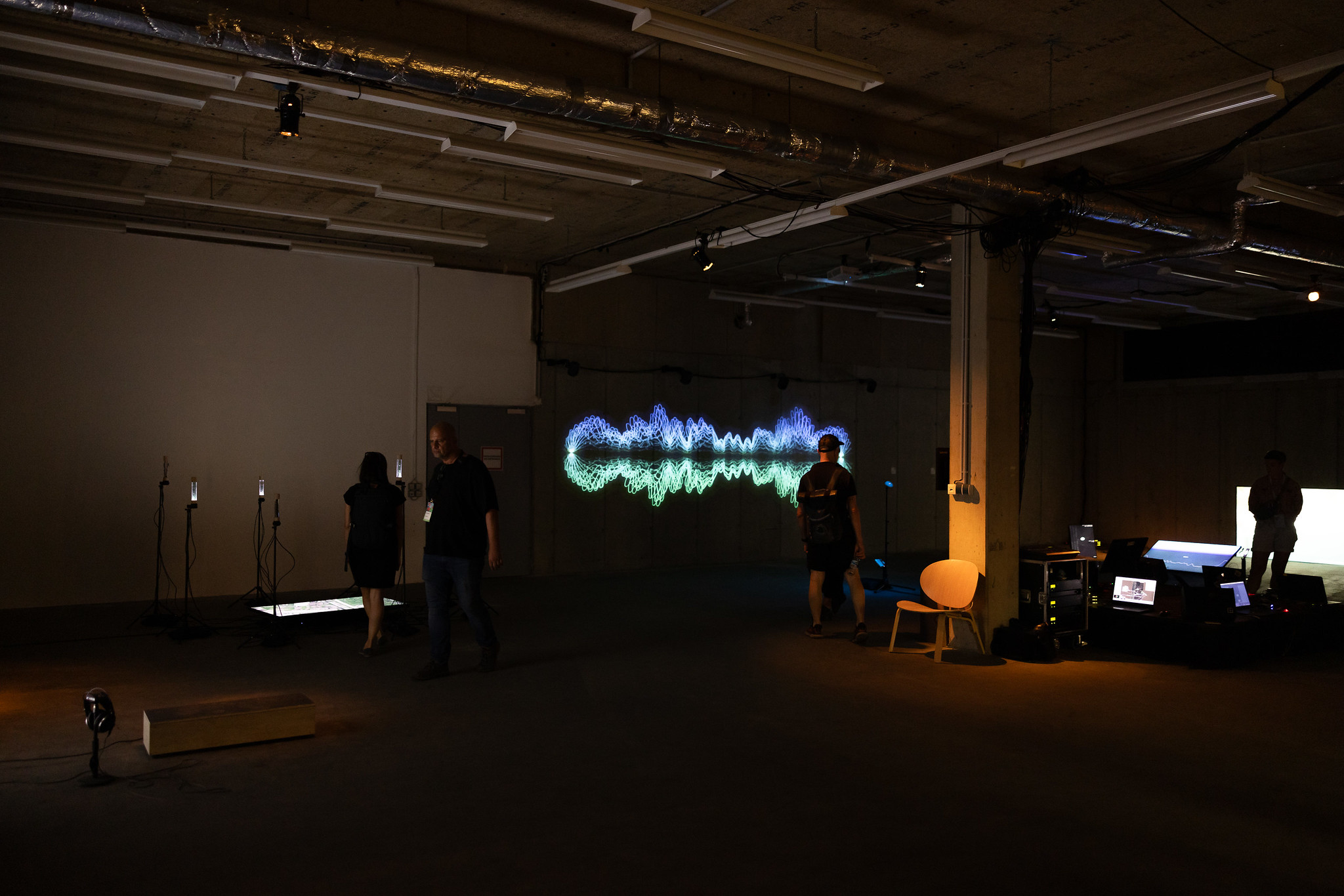Hexagram Network Research-Creation
Hexagram Network’s exhibition at the Ars Electronica Festival brings together recent research-creation works by members of the Network, mainly student members. Its theme imprints emerges from the artistic, interdisciplinary and collaborative approaches promoted by Hexagram.
The works address current issues related to notions of environment, place, territory and identity. They are the result of research and creation processes involving artists, researchers and experts from different fields of expertise. The artists’ interdisciplinary co-creation approaches are carried out through residencies in scientific environments, as well as through the exploration of scientific techniques, technologies and imagery from fields such as Earth and Atmospheric Sciences, Biology, Geology and Geophysics. For these artist-researchers, the deployment of technologies traditionally developed for and used by scientific disciplines is here placed at the service of artistic creation, critical commentary and contemporary imaginaries around science and technology.
-
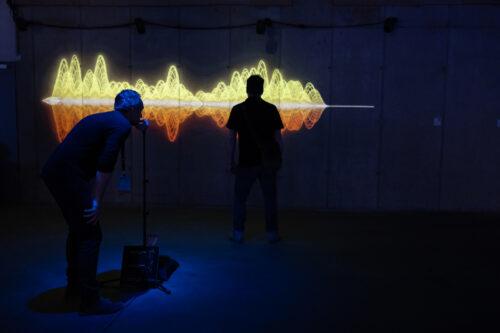
Empreintes sonores
Victor Drouin-Trempe (CA), Jean-Philippe Côté (CA)
Empreintes sonores is an interactive installation that looks at the traces we leave in the digital space. The installation uses a hacked voice-activated assistant to record continuously. The captured sounds are triturated, remixed and played back in the environment.
-
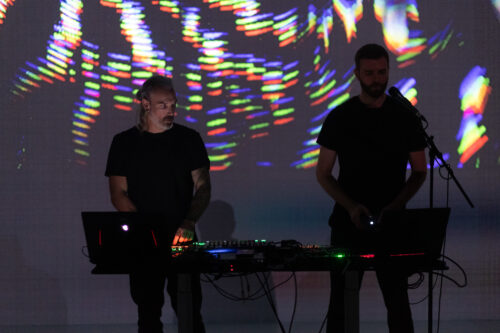
Fragments: The Shape of Things
Marc-André Cossette (CA), Alexandre Saunier (FR)-ALMA
Fragments is an audiovisual performance that explores how automated data processing systems aestheticize human relations and global conflicts. Audiovisual fragments extracted from the news are transformed with electronic instruments, video game engines, photogrammetry and sophisticated AI and A-Life techniques.
-
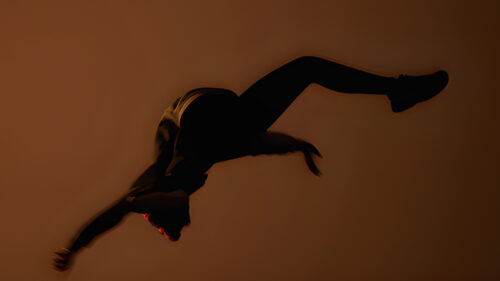
Groundless
Marc-André Cossette (CA), Alexandre Saunier (FR)-ALMA and Paloma Leyton (AR)
Groundless is a video creation that displays weightless bodies moving and morphing to the rhythm of an acoustic music soundtrack. The work brings together an aerial circus artist and two musicians that make use of motion capture, video game engines and spiking neural networks (SNN) to explore the expressive qualities of virtual bodies in suspension.
-
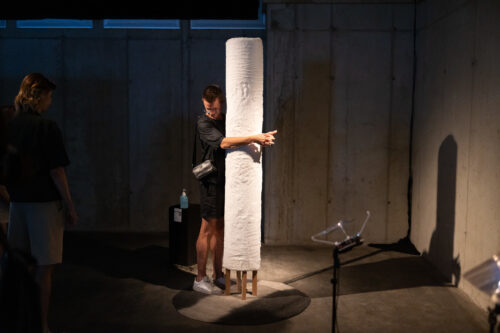
ON/CONTACT
Marie-Eve Morissette (CA)
ON/CONTACT is an interactive installation in the form of a haptic column that the interactor squeezes against their body. It is based on an interaction paradigm that puts the concept of encountering above that of controlling.
-
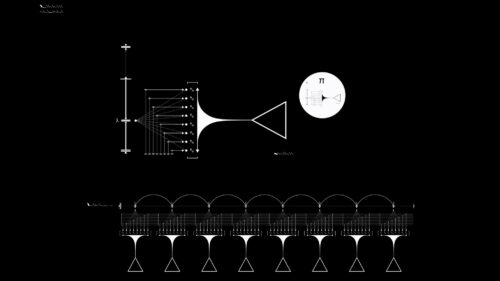
Partitions itératives
Guillaume Pascale (FR)
Partitions itératives is a series of performances consisting of composing music with data streams, generally from outer space objects. These performances offer a sensitive re-reading of scientific data, replaying at the speed of sound a set of data traveling astronomical distances.
-
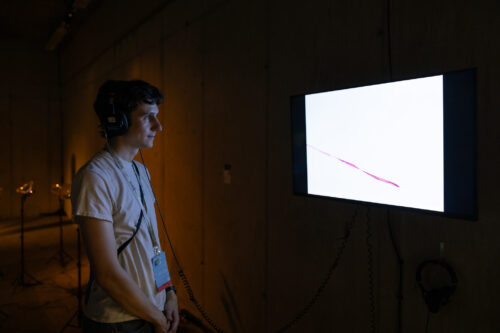
Slow Track
Timothy Thomasson (CA)
With the intention of questioning the structural and aesthetic nature of the virtual image, Slow Track forgoes the excess, speed, spectacle, surrealism, sci-fi, and fantasy commonly associated with computer-generated imagery.
-

Space Junkies
Alice Jarry (CA), Marie-Pier Boucher (CA), Guillaume Pascale (FR)
Space Junkies examines how space debris and space goodies can ‘’forensically decode’’ (Schuppli, 2020) the capital and material accumulation of space exploration and its socio-environmental impacts.
-

Symphony of the Stones
Brice Ammar-Khodja (FR)
Symphony of the Stones is an installation that examines the correlation between the abnormally high presence of heavy metals and magnetic residues in contaminated soils. The project originated from a site-specific study and a series of interventions in a former marshaling yard in Montreal.
-
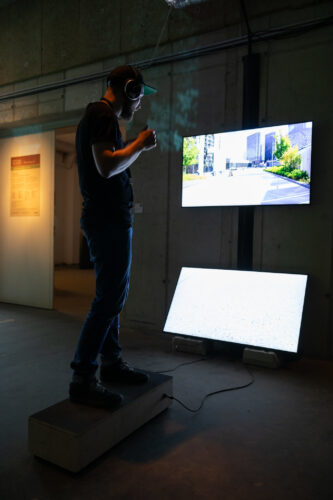
Texturologie vibratoire
Max Boutin (FR)
A skateboarder is like the diamond of a record player, rolling on the textured ground of the city. He follows trajectories from which emanates rhythms and a unique musicality. The urban space is like an immense vinyl record, only asking to be skated, to make a sensitive experience of slide and friction, an experience of…
-

The Architecture of Memories
Mathieu DeBlois (CA)
Memories, encompassing terrains, spaces, people and emotions, are reinterpreted through 3D scanning to create a Unity-based archive. Inspired by Barthes’ Atopia (1995) and Debord’s Drift (1956), this VR project employs point cloud images, ambisonic sounds, and melodies to craft a 360° immersive experience within this mnemonic landscape.
-
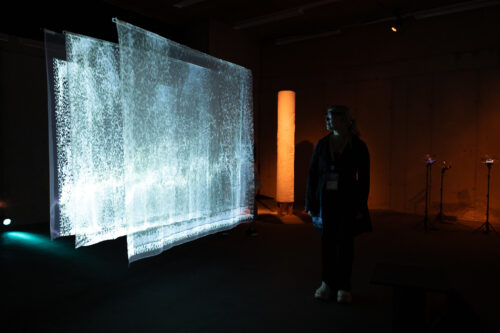
the dream
Nora Gibson (US)
the dream transcends boundaries of body and mind, facilitating calm through a bio-reactive feedback system. In this installation, a participant’s theta (brain) waves are captured through a sensor to animate a particle system in real time.
-

The Transhumants 2
Guillaume Pascale (FR), Jean Dubois (CA)
Displayed on five modified miniature screens, this installation examines the enigmatic movements of a wandering community in a desert environment. Inspired by the prospective nature of Harun Farocki’s operative images and the prescient dimension of Mary Shelley’s novel The Last Man (1826), the scene suggests an oscillating impression between the compulsive surveillance of the territory…
-
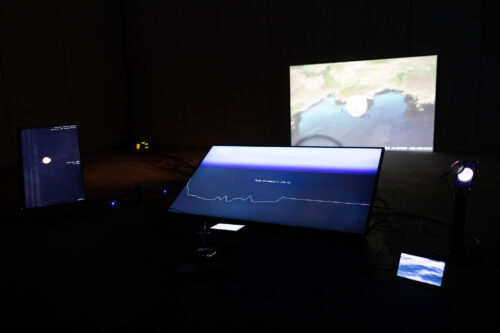
Transatlantic Visions
Juliette Lusven (FR)
This installation explores our relationship to the world and technology through the undersea infrastructure of the Internet, evoked as the “backbone” of our interconnectivity (Starosielski). Like an informational ecosystem, Transatlantic Visions examines this phenomenon of invisibility and circulation from the Atlantic Ocean and the web.
-

Virtual Islands
Olivia Mc Gilchrist (FR)
Inspired by the artist’s dual Caribbean and European heritage, Virtual ISLANDs explores the relationship between the experience of virtual immersion and the physicality of being submerged. This multimedia installation includes a 6 degrees of freedom (DOF) VR experience, inviting a reading of “virtual reality” practice as aesthetic / artistic creation.
-

Where does sound go, where does it come from
Sandra Volny (FR)
While in Coliumo Bay, Chile, investigating different modes of orientation by local fishermen, sound artist Sandra Volny discovered that they were able to navigate the treacherous, dark and foggy conditions of the Pacific coast by relying on sound.
About
Hexagram is an international and interdisciplinary network based in Québec, Canada, dedicated to research-creation that addresses the relationships between arts, cultures and technologies. It comprises around 45 co-investigators and nearly 200 student-members from various artistic disciplines particularly related to the living arts, visual arts, design, and media arts, while also touching on disciplines in the social sciences, the humanities, the natural sciences and engineering.
Credits
Max Boutin – Project curation and production manager.
Jason Pomrenski – Hexagram Network Technical Coordinator
Brice Ammar-Khodja – Project Technical Assistant
Mathieu DeBlois – Project Technical Assistant
Manuelle Freire – Hexagram Network General Coordinator
Gaëlle Scali – Hexagram Network Activity Production Coordinator
Agustina Isidori – Photo documentation
Anatole Michaud – Hexagram Network Communication Manager
